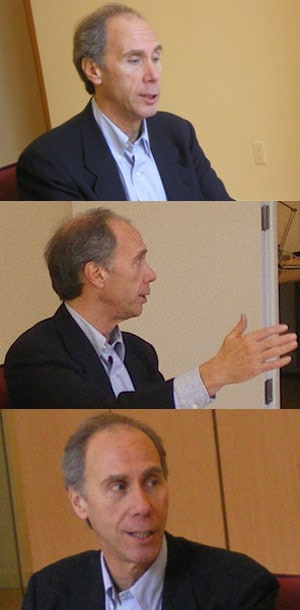WINDOWS OF OPPORTUNITY
By Matt Greco
Global Finance sat down with Martin Fridson, high-yield market specialist and global credit strategist at BNP Paribas Asset Management, in early December to get his take on US and global debt markets during one of the most volatile years in his memory.

High-yield debt in the US will continue to have a low default rate through the next 12 months, according to Martin Fridson, global credit strategist at BNP Paribas Asset Management. It now stands at around 2%, about half of its historic rate.
In addition, Fridson says, there is a dearth of high-yield issuance thanks to the cash-rich position of many sub-investment-grade corporate issuers. Companies built their war chests and pushed out maturities in the very low interest rate environment in the wake of the 2008–2009 financial crisis.
With so much cash now on balance sheet, there will be little pressure on companies to refinance in the coming year. At the same time, leveraged buyout activity—typically a huge source of issuance in the high-yield markets—has slowed dramatically.
As a result, there is relatively strong demand for issues that do come to market. Although pricing is still dependent on broader market conditions, Fridson recommends corporate treasurers not hesitate to issue debt when windows of opportunity open. He says there are a number of issuers in line to do just that: Await a positive market day to launch and close an issue quickly.
“The market is extremely dependent on positive high-yield flows into mutual funds,” Fridson says. Such fund flows can be unpredictable and are often subject to dramatic swings based on short-term market news.
GOOD RISK–REWARD BALANCE
Although it was a year of strong volatility—stemming primarily from the European crisis—Fridson maintains a positive attitude on portions of the debt markets, especially the US high-yield market. He believes that next year will see moderate growth for the US economy, low risk of defaults for corporate issues and wide spreads over treasuries, all of which adds up to a potentially good risk-reward payoff for investors in high-yield securities in 2012.
Of course, Fridson greatly qualifies his predictions, given the uncertainties in the world economy and its strong interconnectedness. If a catastrophic event occurs in Europe, it could have a serious negative impact on returns.
But if Europe were to head into a recession this year with just a small drop in GDP growth, he thinks the US economy and US corporate entities, at least, could survive it fairly intact. That’s because US trade with Europe accounts for only about 20% of GDP, and the portion that might lead to default would be even lower—thus having a minimal effect on growth, corporate credit quality and high-yield returns in the US.
All bets are off if the euro disintegrates, however. Too many unknowns and knock-on effects could kick in, including cross-Atlantic bank obligations, problems with short-term liquidity and so on—making predictions difficult, says Fridson. Despite regulators’ and banks’ best preparations, no one should be confident that a wider financial contagion could be contained.
Fridson notes that Moody’s rating agency actually predicts a lower rate of default for issuers next year in Europe than in the US—based on the generally higher rate of bond quality in the European market. In contrast, Goldman Sachs has listed shorting European bonds as its number-one investment idea for 2012.
But apart from a worst-case scenario occurring in Europe, Fridson is remarkably upbeat. He says: “Right now, the spread over treasuries and over other risks, including liquidity risks and a European recession, are priced into high-yield bonds and could presage a decent return in 2012—particularly given the lack of alternatives and the low rate of US treasuries.”



